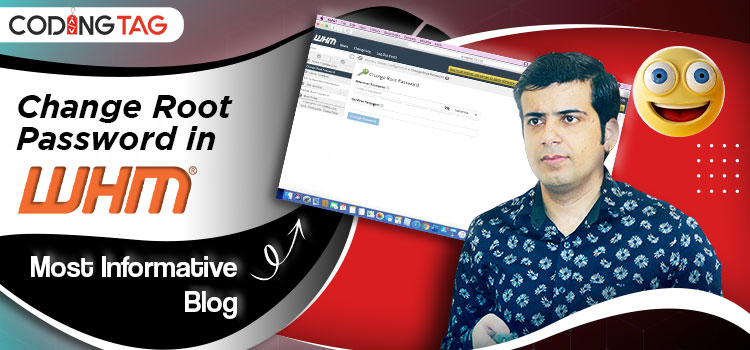Introduction to WHM Interface
0 2388
The Web Host Manager (WHM) interface is a powerful and comprehensive web-based control panel that plays a pivotal role in managing and overseeing web hosting services.
World's No. 1 WHM cPanel Provider
Designed primarily for hosting providers and server administrators, WHM offers a wide array of features and tools that enable efficient server management, account provisioning, security configuration, and resource allocation.
How to install cPanel on CentOS 7
This interface serves as a central hub for controlling various aspects of web hosting, from creating and managing hosting accounts to configuring server settings and ensuring optimal performance.
Key Features and Functionalities:
Server Management: At the heart of WHM lies the ability to manage server-level settings and configurations. Administrators can set up server software, configure firewall rules, and manage various aspects of server security. This includes implementing security measures like IP blocking, SSL/TLS configuration, and brute-force protection.
Account Creation and Management: WHM enables administrators to create, modify, and delete individual hosting accounts for clients or customers. Through the interface, resource allocations such as disk space, bandwidth, and email accounts can be assigned to each account, allowing for personalized hosting solutions.
Package Management: To streamline the process of setting up hosting accounts, WHM allows administrators to create predefined hosting packages. These packages consist of predetermined resource allocations and settings that can be easily applied to new accounts. This feature enhances efficiency and consistency in account provisioning.
User Access Control: WHM provides granular control over user access to cPanel accounts. Administrators can suspend or terminate accounts, reset passwords, and manage permissions for individual users. This ensures a high level of security and accountability.
Security and Privacy: Security is paramount in web hosting, and WHM offers an array of tools to enhance server and account security. Administrators can configure firewalls, manage SSL certificates, and implement security policies to safeguard both the server and hosted websites from potential threats.
DNS Management: WHM facilitates the management of domain names and DNS settings. Administrators can add, modify, or delete DNS records, helping to ensure accurate domain resolution and website accessibility.
Backup and Restore: Regular backups are crucial for data protection and disaster recovery. WHM allows administrators to schedule and manage backups of server data and individual accounts, providing a safety net in case of data loss.
Email Configuration: WHM offers comprehensive email management capabilities. Administrators can configure server-wide email settings, manage email accounts, and set up forwarding and autoresponders. This feature contributes to efficient communication for hosted websites.
Software Installation and Updates: Through WHM, administrators can install and manage various software applications and modules on the server.
This includes PHP versions, Databases, Content Management Systems (CMS), and more. Additionally, WHM provides tools for keeping the server's software up to date, ensuring security patches and performance improvements are applied.
Resource Monitoring: Monitoring server resource usage is essential for maintaining optimal performance. WHM offers tools to track CPU, memory, and disk space utilization, allowing administrators to identify and address potential performance bottlenecks.
Logs and Analytics: WHM provides access to various server logs and statistics. These logs offer valuable insights into server activity, errors, and user behavior, aiding in troubleshooting and performance optimization.
Customization and Branding: Hosting providers can customize the WHM interface to match their brand identity. This includes adding logos, customizing themes, and defining default settings for new accounts.
User-Friendly Interface and Navigation:
The WHM interface is designed with usability in mind. Its user-friendly layout and intuitive navigation make it accessible to both experienced server administrators and those new to web hosting management. The interface often features a dashboard that provides an overview of server status, resource usage, and critical notifications.
Navigational menus and submenus organize the interface into logical sections, each dedicated to a specific aspect of server and account management. This structured approach ensures that administrators can quickly locate the tools and settings they need without becoming overwhelmed by complexity.
Benefits and Importance:
The WHM interface offers numerous benefits for hosting providers, server administrators, and their clients:
Efficiency and Productivity: WHM streamlines the process of managing multiple hosting accounts and servers. Its automated features, package management, and user access controls contribute to increased efficiency and productivity.
Scalability: WHM is designed to accommodate a growing number of hosting accounts and websites. Hosting providers can easily scale their operations while maintaining control over resources and settings.
Security and Reliability: With robust security features, such as firewall management, SSL/TLS configuration, and backup options, WHM helps ensure the security and reliability of hosted websites and data.
Customization: The ability to customize the WHM interface and apply branding elements allows hosting providers to create a consistent and professional user experience for their clients.
Troubleshooting and Support: WHM's access to server logs, statistics, and diagnostic tools simplifies troubleshooting and support efforts. Administrators can quickly identify issues and provide effective solutions to clients.
Client Satisfaction: The ease of use and comprehensive features provided by WHM contribute to higher client satisfaction. Clients can efficiently manage their hosting accounts and websites through the associated cPanel interface.
Conclusion:
The Web Host Manager (WHM) interface serves as a crucial tool for web hosting providers and administrators, offering a centralized platform for managing various aspects of server administration and account management.
Its robust features, user-friendly interface, and comprehensive functionalities contribute to efficient server management, enhanced security, and improved client satisfaction. WHM empowers administrators to create, configure, and maintain hosting accounts, ensuring the smooth operation of websites and online services.
As an essential component of the web hosting ecosystem, WHM plays a pivotal role in delivering reliable and high-performance hosting solutions to clients around the world.

Share:








Comments
Waiting for your comments